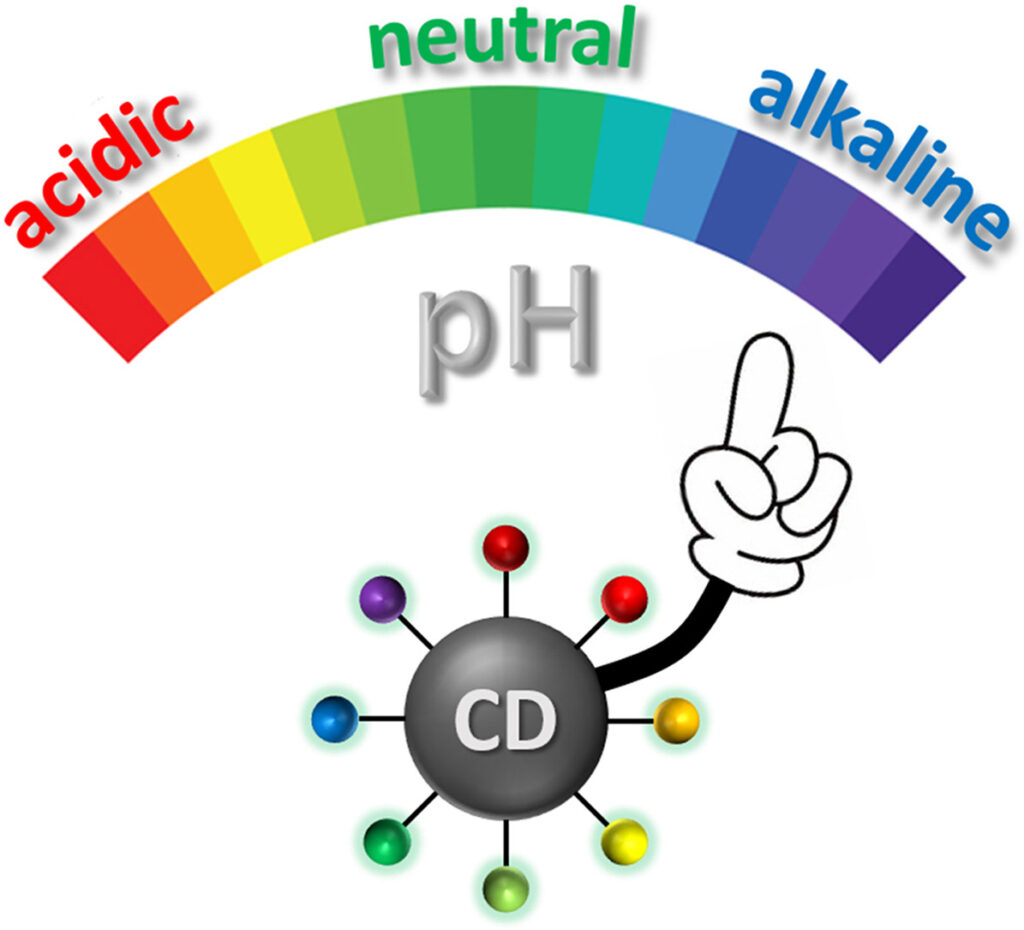Revolutionary sensor can measure pH inside living cells with unprecedented accuracy
A new generation of nanosensors capable of detecting pH inside living cells with previously unseen sensitivity and stability has been developed by a team of scientists from CATRIN, Palacký University Olomouc, and VSB – Technical University of Ostrava, in cooperation with colleagues from Brno University of Technology. The Czech researchers presented the carbon-dot-based sensors, which offer great potential for medical diagnostics, in the journal Biosensors and Bioelectronics.
The pH value is one of the most frequently measured chemical parameters, but the development of nanometric sensors capable of accurately mapping the distribution and dynamics of pH with high spatial and temporal resolution remains a significant challenge. Such sensors are important for our understanding of numerous physiological and pathological processes. The pH value, among other things, has a fundamental effect on enzyme function and influences metabolic and signalling pathways as well as the transport of substances across membranes.
“We were looking for a way to monitor processes inside cells with much higher precision than current probes allow. We have developed a sensor that is small, brightly luminescent, highly stable, and capable of tracking pH changes over an exceptionally wide range. The sensor not only glows under the microscope but also detects pH changes based on fluorescence lifetime, which is a more accurate and reliable parameter than ordinary light intensity,” explained Sergii Kalytchuk, the first author of the study, from CATRIN and the Materials-Environmental Laboratory (MEL) at VSB–TUO.

In contrast to other fluorescent pH sensors, which suffer from gradual photobleaching, chemical degradation, and often require calibration, the new nanosensors maintain excellent performance even under demanding conditions. Their fluorescence lifetime predictably increases with rising pH, which enables direct measurement of cellular acidity – a key parameter closely related to pathological processes such as cancer and neurodegeneration.
“In an experiment with human skin cells, and using advanced microscopy based on fluorescence lifetime imaging (FLIM), the sensors enabled precise mapping of pH inside lysosomes, which are, simply put, the cell’s recycling and cleaning units. Moreover, it was possible to detect pH changes after the application of chemical inhibitors, which opens possibilities for drug testing and for monitoring cellular stress in real time,” said Tomáš Malina, another author of the study.
The development of the sensor took place at the interface of synthetic chemistry and physics, but its application in biomedicine gives the entire work practical significance.
“The study shows how basic materials chemistry can be linked with real biomedical challenges. Thanks to their exceptional photostability, biocompatibility, and extremely wide pH range, these sensors have great potential to become an effective tool for medical diagnostics, including clinical applications,” concluded Radek Zbořil, the corresponding author of the paper.